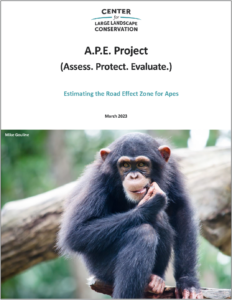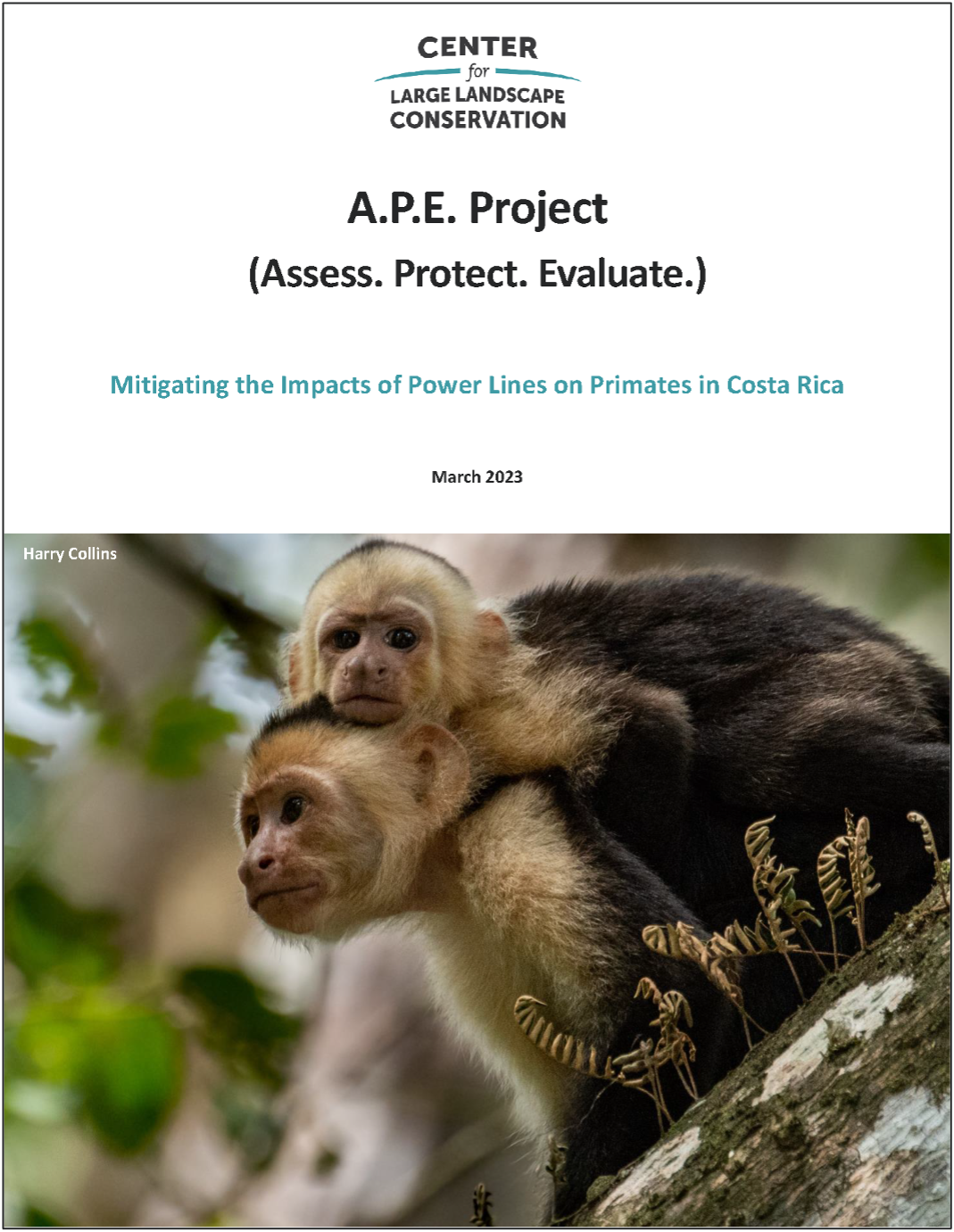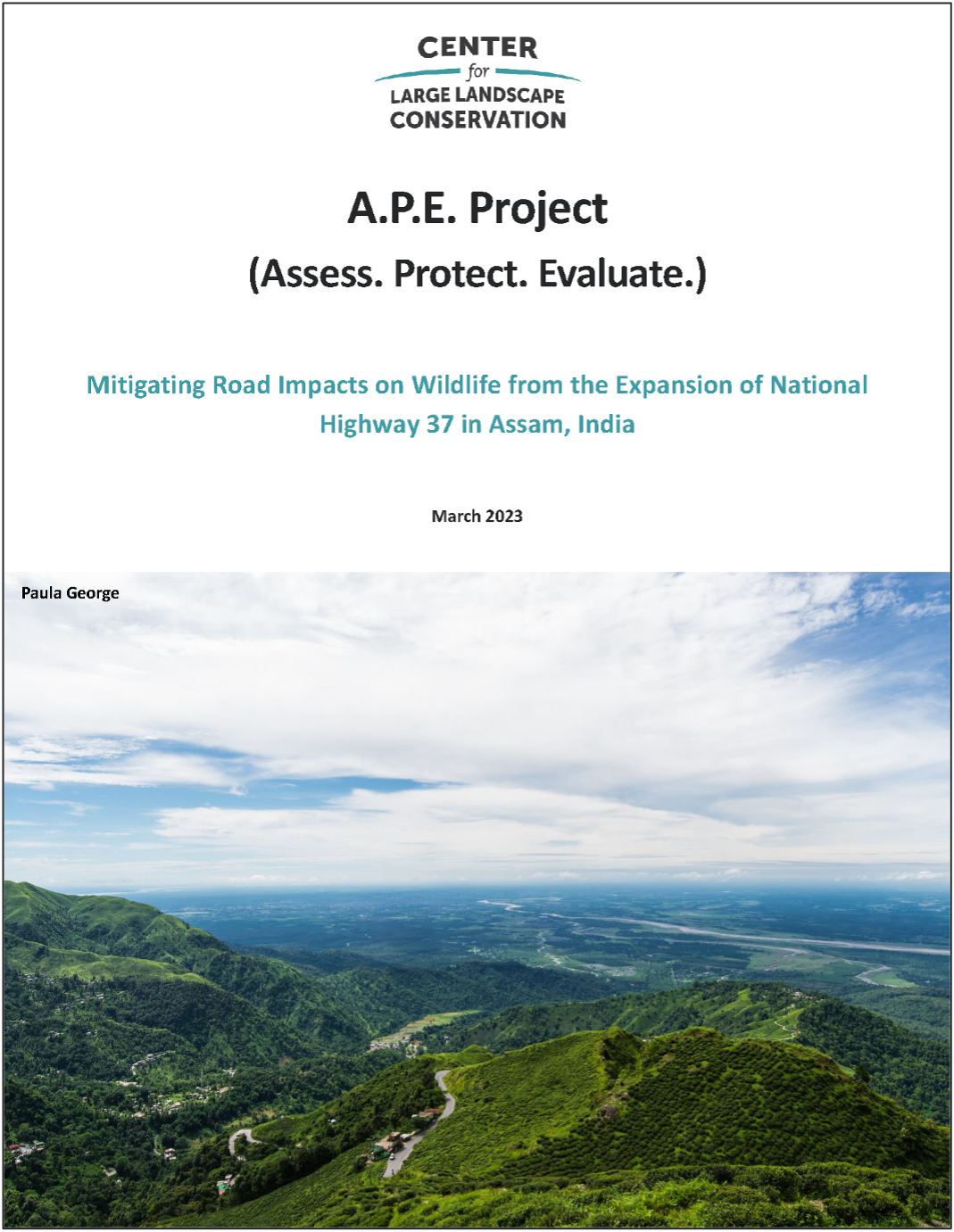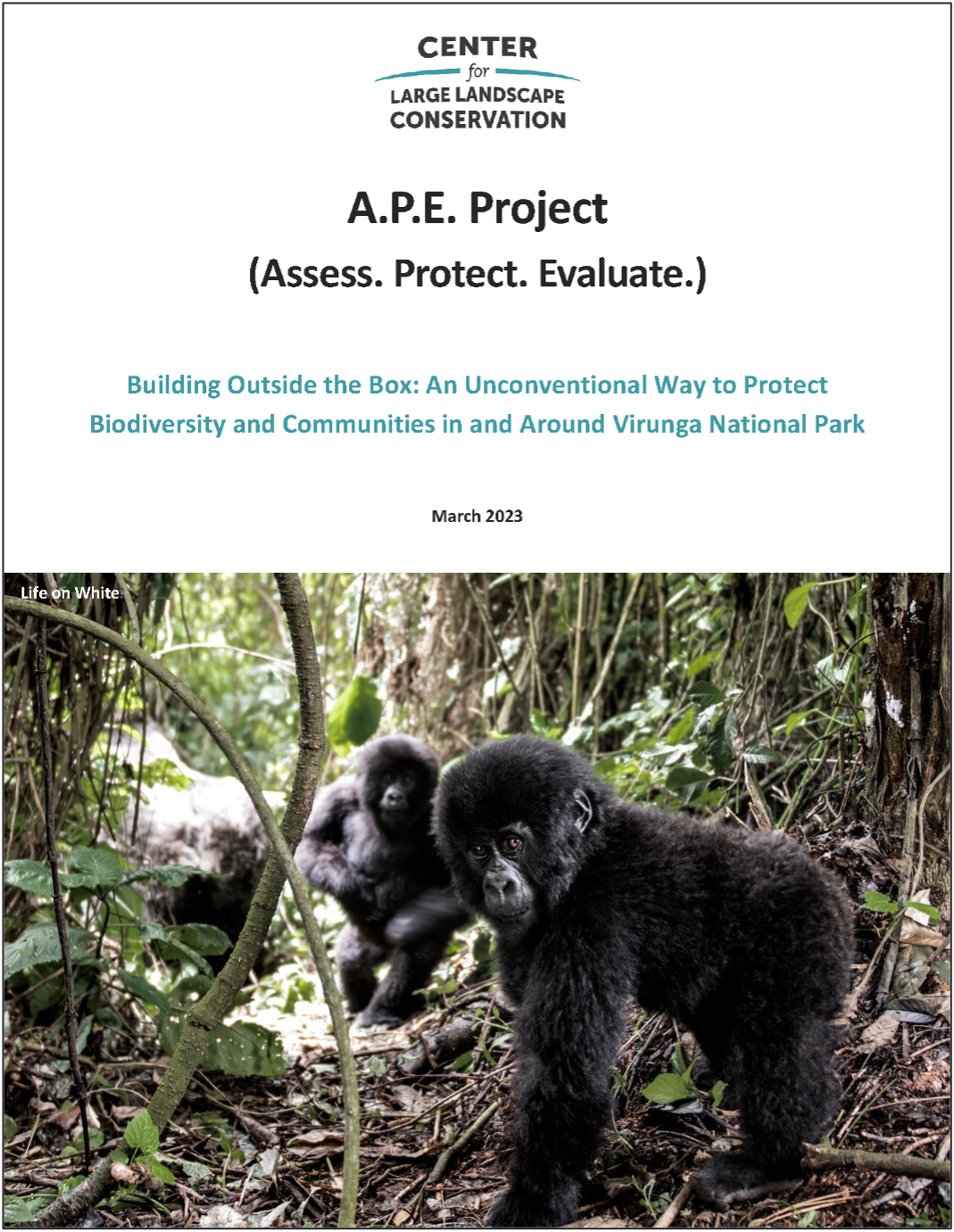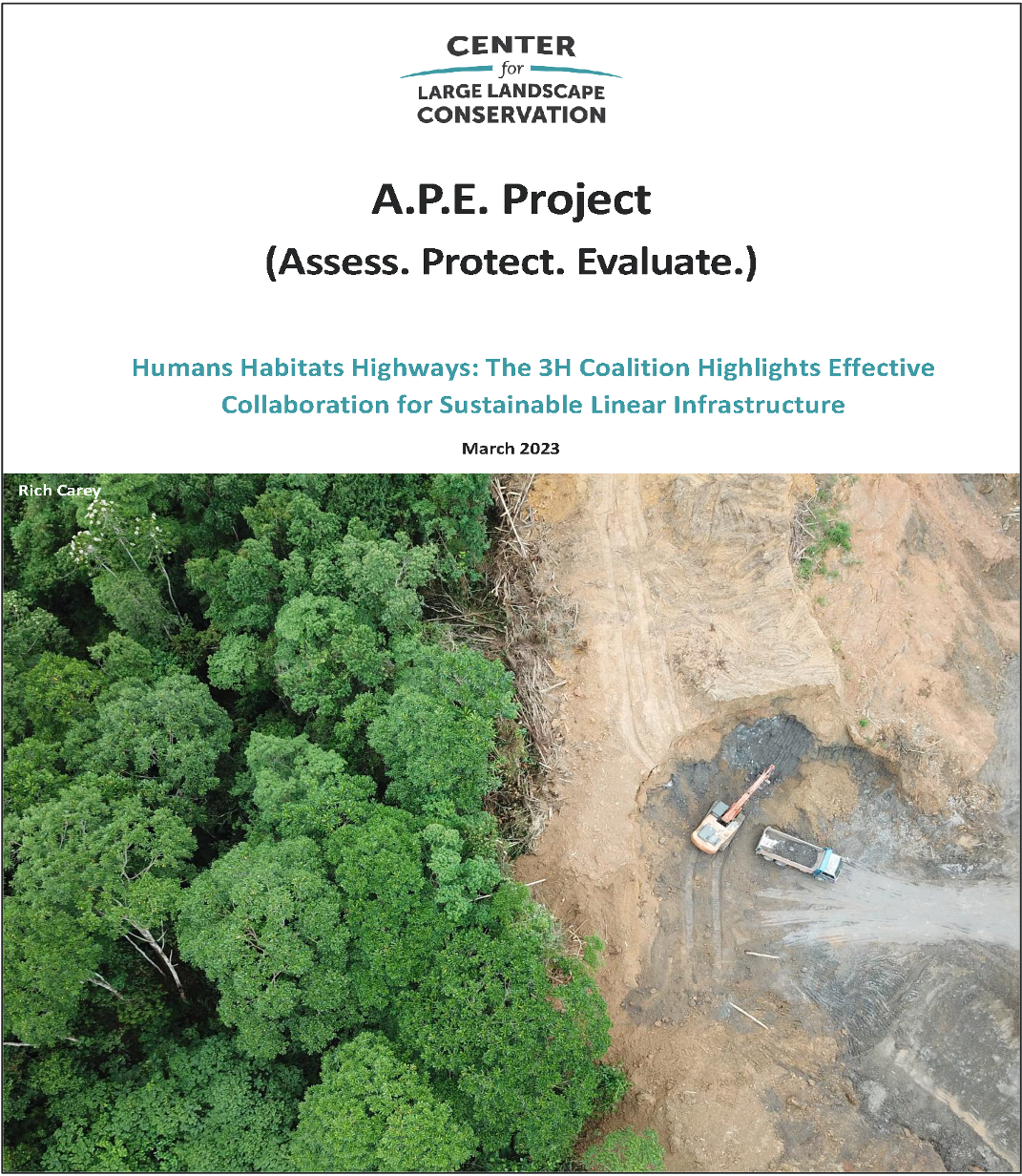Assess. Protect. Evaluate.
Assessing Linear Infrastructure Threats to Great Apes and Gibbons in Three Key Landscapes
Apes, which include critically endangered species such as gorillas and orangutans, are particularly vulnerable to the effects of linear infrastructure development as their forest homes become further fragmented and human disturbance increases. With support from the Arcus Foundation, the Center for Large Landscape Conservation embarked upon the A.P.E. (Assess. Protect. Evaluate.) Project to address the threats of rapidly expanding linear infrastructure (LI) development to three endangered species in three key great ape and gibbon habitats in Africa and Asia.
These ten A.P.E. Project case studies are a globally diverse collection of real-world best practices, projects, and lessons that aim to provide practitioners exemplary ways of protecting apes—and other species—from LI development.
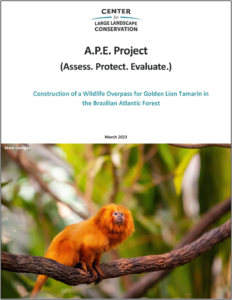 | ||
Construction of a Wildlife Overpass for Golden Lion Tamarin in the Brazilian Atlantic Forest |
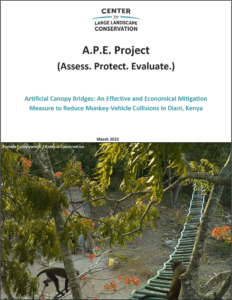 | ||
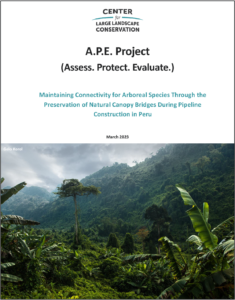 | ||
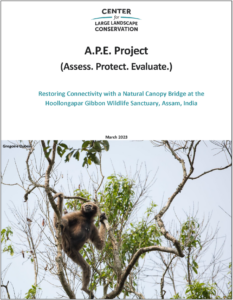 | ||
Contaminated Corridors: The Indirect Consequences of Linear Infrastructure Expansion |
Mitigating the Impacts of Power Lines on Primates in Costa Rica |
Mitigating Road Impacts on Wildlife from the Expansion of National Highway 37 in Assam, India |
Learn more about the A.P.E. Project and read the Final Report here.
The A.PE. Project was made possible through a generous grant from the Arcus Foundation.
Questions? Please contact Dr. Megan Parker.
Banner Photo: Hoolock Gibbon – Adobe Stock

